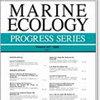Phytoplankton community composition as a driver of annual autochthonous organic carbon dynamics in the northern coastal Baltic Sea
IF 2.1
3区 环境科学与生态学
Q2 ECOLOGY
引用次数: 0
Abstract
ABSTRACT: Phytoplankton are the major primary producers in the pelagic system. They greatly influence biogeochemical cycles but little is known about the importance of shifting phytoplankton community composition for carbon dynamics. This study investigates the impact of seasonal changes in coastal phytoplankton communities on pelagic carbon fluxes. A field sampling campaign, covering an annual cycle in primary production, was conducted to assess the seasonal changes of phytoplankton communities and relevant organic carbon parameters in the coastal Baltic Sea. The monitoring frequency ranged from 1 to 3 wk, adapted to match the seasonal phytoplankton blooms. In addition, sediment traps were deployed to determine the particulate carbon and nutrient export to the seafloor in every season. We found that the phytoplankton biomass during the spring bloom was as high as 550 µg C l-1 and was dominated by diatom species (88% of total phytoplankton biomass). In comparison, the more species-rich summer bloom reached a combined maximum biomass of 236 µg C l-1. However, the highest export flux of particulate organic carbon was found in the middle of August (561 mmol C m-2 d-1) and, not as expected, around the spring bloom in May (226 mmol C m-2 d-1), suggesting a high potential for carbon recycling within the pelagic food web rather than being exported to the seafloor or advected laterally. Our study emphasizes the importance of keystone species and diversity for carbon transport processes in marine coastal ecosystems and highlights complex relationships between phytoplankton biomass production, community composition and carbon dynamics.浮游植物群落组成是波罗的海北部沿海自生有机碳年度动态的驱动因素
摘要:浮游植物是浮游系统中的主要初级生产者。它们极大地影响着生物地球化学循环,但人们对浮游植物群落组成的变化对碳动力学的重要性知之甚少。本研究调查了沿岸浮游植物群落的季节性变化对浮游碳通量的影响。为了评估波罗的海沿岸浮游植物群落和相关有机碳参数的季节变化,进行了一次涵盖初级 生产年周期的实地取样活动。监测频率为 1 至 3 周,以配合浮游植物的季节性繁殖。此外,还部署了沉积物捕集器,以确定每个季节向海底输出的颗粒碳和营养物质。我们发现,春季藻华期间的浮游植物生物量高达 550 µg C l-1,且以硅藻类为主(占浮游植物总生物量的 88%)。相比之下,物种更为丰富的夏季水华的总生物量最高为 236 µg C l-1。然而,颗粒有机碳的最高输出通量出现在 8 月中旬(561 mmol C m-2 d-1)和 5 月春花盛开前后(226 mmol C m-2 d-1),这表明碳在浮游食物网内循环的潜力很大,而不是输出到海底或横向平移。我们的研究强调了关键物种和多样性对海洋沿岸生态系统碳传输过程的重要性,并突出了浮游植物生物量生产、群落组成和碳动态之间的复杂关系。
本文章由计算机程序翻译,如有差异,请以英文原文为准。
求助全文
约1分钟内获得全文
求助全文
来源期刊

Marine Ecology Progress Series
环境科学-海洋学
CiteScore
5.30
自引率
8.00%
发文量
238
审稿时长
3 months
期刊介绍:
The leading journal in its field, MEPS covers all aspects of marine ecology, fundamental and applied. Topics covered include microbiology, botany, zoology, ecosystem research, biological oceanography, ecological aspects of fisheries and aquaculture, pollution, environmental protection, conservation, and resource management.
 求助内容:
求助内容: 应助结果提醒方式:
应助结果提醒方式:


